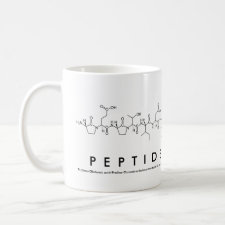
Authors: Stroink T, Paarlberg E, Waterval JCM, Bult A, Underberg WJM
Article Title: On-line sample preconcentration in capillary electrophoresis, focused on the determination of proteins and peptides.
Publication date: 2001
Journal: Electrophoresis
Volume: 22
Issue: (12)
Page numbers: 2375-2383.
DOI: 10.1002/1522-2683(200107)22:12<2374::AID-ELPS2374>3.0.CO;2-Y
Abstract: This overview highlights the possibilities of on- or in-line preconcentration procedures in combination with a CZE separation, focused on the determination of peptides and proteins. The discussed methods, including sample stacking, field-amplified injection, isotachophoresis, solid phase extraction, membrane preconcentration, electroextraction, supported liquid membranes, hollow fibers, immunoaffinity, and molecularly imprinted polymers technology preconcentration are categorized in electrophoresis-based and chromatography-based preconcentration. The chromatography-based preconcentration is subdivided in low-specificity and high-specificity methods. A number of preconcentration methods are available, however, this paper demonstrates that various compounds in different media (aqueous solutions, urine, and plasma) require different preconcentration systems. The preconcentration techniques of first choice in general seem to be solid-phase extraction and membrane preconcentration, because of their high concentration ability, multiapplicability, relative simplicity and clean-up capability. For the future, hollow fibers seem to hold a great potential as preconcentration technique, yielding high concentration factors, using simple designs. New techniques, such as hollow fibers, molecularly imprinted polymers technology and supported liquid membranes may have the potential to supersede the conventional pre-concentration techniques in some cases. The larger the arsenal of preconcentration techniques becomes, the more efficiently peptides and proteins may be analyzed in the future. These techniques, in some cases, require pre-cleanup procedures, to ensure the purity of the samples to concentrate



Join the Society for Molecular Imprinting

New items RSS feed
Sign-up for e-mail updates:
Choose between receiving an occasional newsletter or more frequent e-mail alerts.
Click here to go to the sign-up page.
Is your name elemental or peptidic? Enter your name and find out by clicking either of the buttons below!
Other products you may like:
 MIPdatabase
MIPdatabase









